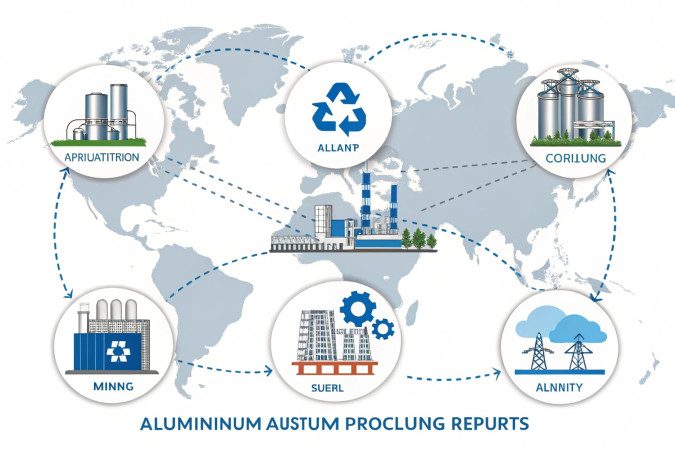
Follow India Renewable Energy News on WhatsApp for exclusive updates on clean energy news and insights
Global Aluminum Industry Faces Challenges in Decarbonization Efforts, Report Finds
Mar 03, 2025
The aluminum industry, a major contributor to global carbon emissions, is facing increasing pressure to decarbonize, according to a new report titled “What is Green Aluminum?”. The report, published by Global Efficiency Intelligence, highlights the sector’s energy-intensive nature and its significant role in global CO? emissions, accounting for around 2% of total emissions in 2020.
Rising Demand, Slow Decarbonization
Aluminum demand is projected to grow at an annual rate of 3%, outpacing the steel and cement industries. While the emissions intensity of aluminum production is declining, the International Energy Agency (IEA) warns that the rate of reduction must double by 2030 to align with the Paris Climate Agreement goals.
Lack of Standardization in Green Aluminum Efforts
The report examines multiple standards, protocols, initiatives, and policies aimed at reducing emissions from aluminum production. However, it finds that the lack of cohesive guidelines and varying methodologies across initiatives make it difficult for industries and governments to track progress effectively.
Major Standards and Protocols Analyzed:
- World Resources Institute GHG Protocol for Aluminum
- ISO 19694-4: 2023 (Aluminum Industry Emissions)
- International Aluminium Institute (IAI) Carbon Footprint Methodology
- First Movers Coalition Initiative for Low-Carbon Aluminum
Despite growing awareness, the report notes that no global standard defines “green aluminum” comprehensively, leading to inconsistencies in emissions reporting, certification, and industry adoption.
Lack of Policy Support and Financial Incentives
The report highlights a significant gap in policy support for aluminum decarbonization compared to the steel and cement sectors. Countries such as the U.S. and Canada have yet to establish clear public procurement emissions thresholds for aluminum, whereas steel and cement have well-defined targets under various national initiatives.
Additionally, trade agreements such as the U.S.-EU Arrangements on Global Steel and Aluminum Excess Capacity and Carbon Intensity have stalled, further delaying policy action in the sector.
Proposed Green Aluminum Rating System
To address the inconsistencies in defining and tracking low-carbon aluminum, the report proposes a Green Primary Aluminum Rating System. This categorizes primary aluminum production based on CO2intensity, assigning ratings from A (best, <1>12 tCO2per ton).
According to this system:
- Canada, Norway, and Iceland achieve a B rating (1-2 tCO2 per ton).
- India and China, with the highest emissions intensity, receive a G rating (>12 tCO2 per ton).
This rating system aims to enhance transparency, incentivize low-carbon production, and provide a standardized benchmark for policymakers and industry leaders.
The report underscores the urgency of accelerating decarbonization in the aluminum industry. While various standards and initiatives exist, the lack of harmonization and clear policy support is slowing progress. The study calls for greater alignment with Paris Agreement goals, comprehensive emissions tracking, and stronger financial incentives to encourage industries and governments to prioritize low-carbon aluminum production.
With aluminum playing a key role in clean energy technologies, achieving a sustainable aluminum industry is crucial for meeting global climate targets.